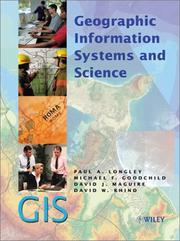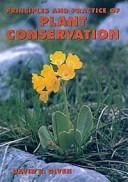| Listing 1 - 6 of 6 |
Sort by
|
Book
ISBN: 9250041616 Year: 1998 Publisher: Rome : FAO,
Abstract | Keywords | Export | Availability | Bookmark
 Loading...
Loading...Choose an application
- Reference Manager
- EndNote
- RefWorks (Direct export to RefWorks)
Animal domestique --- domestic animals --- Race (animal) --- Breeds (animals) --- Population animale --- Animal population --- Amélioration des animaux --- Animal breeding --- Ressource génétique --- genetic resources --- Conservation des ressources --- Resource conservation --- Collecte de données --- data collection --- RBINS-OTHER
Book
ISSN: 03650936 ISBN: 2803102285 9782803102280 Year: 2006 Volume: 3e ser., t. 25. Publisher: Bruxelles : Académie royale de Belgique,
Abstract | Keywords | Export | Availability | Bookmark
 Loading...
Loading...Choose an application
- Reference Manager
- EndNote
- RefWorks (Direct export to RefWorks)
Physical geography --- Ardennes (B) --- Eifel --- Geology, Structural --- Tectonique --- Seismologie --- Seismology --- Zone volcanique --- Volcanic areas --- Mouvement du sol --- soil movement --- Collecte de données --- data collection --- Traitement des données --- Data processing --- Belgium --- 551.8 --- Sciences Structural geology --- Special issues --- earth sciences --- geology --- geomorphology --- tectonics --- Germany --- Ardenne --- Fysische geografie --- Ardennen (B) --- Neotectonics --- Geology, Structural. --- Neotectonics. --- Ardenne-eifel
Book
ISBN: 929167205X Year: 2000 Volume: 6
Abstract | Keywords | Export | Availability | Bookmark
 Loading...
Loading...Choose an application
- Reference Manager
- EndNote
- RefWorks (Direct export to RefWorks)
Déchet --- wastes --- water --- Pollution atmosphérique --- air pollution --- Dioxyde de carbone --- carbon dioxide --- Changement climatique --- Climatic change --- Agriculture --- agriculture --- Pesticide --- pesticides --- Engrais --- fertilizers --- Impact sur l'environnement --- Environmental impact --- Transport --- transport --- Énergie --- energy --- European Union --- Collecte de données --- data collection --- Analyse de données --- Data analysis --- #A0009A --- 500 Milieu --- agriculture. --- transport.
Book
ISBN: 2743000236 9782743000233 Year: 1995 Publisher: Paris : [S.l.] : Technique & Documentation - Lavoisier ANTEA les sciences de la Terre au service de votre projet,
Abstract | Keywords | Export | Availability | Bookmark
 Loading...
Loading...Choose an application
- Reference Manager
- EndNote
- RefWorks (Direct export to RefWorks)
L'industrialisation massive de notre environnement a rompu le cycle naturel de dépollution des sites exploités par l'homme. Afin d'éviter une rupture définitive et dramatique de l'écosystème, il convient de remettre ces sites en état : établir un diagnostic, évaluer les risques, réaliser la dépollution, contrôler le résultat. Cet ouvrage novateur reprend toutes ces étapes et permet ainsi aux industriels, spécialistes de la dépollution, responsables des collectivités publiques… de mieux prendre en compte les exigences de la législation.
Pollution du sol --- Soil pollution --- Eau souterraine --- groundwater --- Pollution de l'eau --- Water pollution --- Polluant --- pollutants --- Lutte antipollution --- pollution control --- Pollution --- Enquête --- surveys --- Échantillonnage --- Sampling --- Collecte de données --- data collection --- Diagnostic de laboratoire --- Laboratory diagnosis --- Lutte chimique --- Chemical control --- Lutte physique --- Physical control --- Lutte biologique --- Biological control --- Réglementation --- Regulations --- France --- Europe --- 551.491

ISBN: 0471892750 0471495212 9780471892755 9780471495215 Year: 2001 Publisher: Chichester: Wiley,
Abstract | Keywords | Export | Availability | Bookmark
 Loading...
Loading...Choose an application
- Reference Manager
- EndNote
- RefWorks (Direct export to RefWorks)
Geographic Information Systems and Science is a landmark in the evolution of GIS. It is a book that captures and redefines the richness and diversity of GIS, in an accessible form. It presents a clearly-defined path to a world of learning about GIS, using the Internet and closely-couples reference sources. It is richly produced and illustrated unlike any other in the field, with over 300 full color illustrations. Geographic Information Systems and Science is unique in several ways. It presents comprehensive treatments of: *Geographic Information Science - the scientific context to GIS, technical content and geographic implications *The real value of GIS - illustrated using real world applications. Treatments emphasize operational, tactical and strategic issues *The impact of Internet GIS on interdisciplinary science and society *The pivotal role of GIS as a business driver in the information age - including the role of GIS as a business asset and the operational dynamics of its use in practice The book is the first to provide a gateway to Internet-based classroom and distance learning. A series of modules of the ESRI Virtual Campus have been specially written around the material in this book, and detailed learning guides identify other on-line sources. Additional free supplementary reference material is available through a Web site dedicated to the book Contents The book begins by developing the themes of GI Systems and GI Science, and illustrates the practical value of GIS through real case studies. The major parts then consider: *GIS Principles *GIS Techniques *GIS Practice A concluding section anticipates the future of GIS and prospects for the people who use it. This book is suitable for 2nd/3rd year undergraduates taking courses in GIS within departments of Geography, Environmental Science, Forestry, Business Studies and Economics, Computer Science, Information Technology, Planning, and Archaeology. It is also suitable as a foundation course taught in M.
Système d'information géographique --- Geographical information systems --- Geography --- Collecte de données --- data collection --- Analyse de données --- Data analysis --- Banque de données --- Databases --- Geographic information systems. --- Problem solving. --- Geografie --- Geografische Informatie Systemen --- Algemeen. --- 681.3*H4 --- Information systems applications (GIS etc.) --- 681.3*H4 Information systems applications (GIS etc.) --- Geographic information systems --- Problem solving --- Methodology --- Psychology --- Decision making --- Executive functions (Neuropsychology) --- GIS (Information systems) --- Information storage and retrieval systems --- Systeme d'information geographique (s.i.g.)

ISBN: 0412612704 0881922498 9780881922493 9780412612701 0585373442 9780585373447 Year: 1994 Publisher: London : Chapman and Hall,
Abstract | Keywords | Export | Availability | Bookmark
 Loading...
Loading...Choose an application
- Reference Manager
- EndNote
- RefWorks (Direct export to RefWorks)
"Principles and Practice of Plant Conservation is the first exhaustive and systematic treatment of the issues of plant conservation, other books on the subject having been collections of articles on specialized topics or of a regional nature. This book, growing out of a major sponsorship effort by two of the world's leading conservation organizations to 'assert the fundamental importance of plants in all conservation activities', provides the well-integrated coverage that arises from an expert's thoughtful analysis of the entire subject." "Commissioned by the World Wide Fund for Nature and IUCN - The World Conservation Union as part of their joint endeavor of 'building the capacity to conserve', this work by David R. Given elucidates the concepts that underlie successful conservation efforts. Drawing on his own work and involving international collaboration, the author also presents a large number of real-life case studies that illustrate the principles of conservation in action. Chapters are devoted to the natural - and unnatural - causes of plant rarity and endangerment, and the management of plant populations in natural habitats, in modified landscapes, and off-site to preserve germplasm. Going beyond the biology of conservation, other chapters are devoted to the ethical, educational, and economic aspects of plant conservation. Cyrille de Klemm, an expert on international law, has contributed a chapter on conservation legislation." "Plants play critical roles in the web of life, providing the food and shelter on which animals depend. As human population and development pressures on the world's biota increase, it is in the best interest of all to use plant resources wisely and sustainably. That will be possible only if plant diversity is maintained, and Principles and Practice of Plant Conservation is an essential reference for those concerned with how best to preserve what we have."--Jacket.
Plante sauvage --- Wild plants --- Biodiversité --- Biodiversity --- Espèce en danger --- endangered species --- Population végétale --- plant population --- Dynamique des populations --- population dynamics --- Protection de l'environnement --- environmental protection --- Conservation de la nature --- Nature conservation --- Conservation des ressources --- Resource conservation --- Analyse économique --- Economic analysis --- Collecte de données --- data collection --- Réserve naturelle --- Nature reserves --- Coopération --- Cooperation --- 502.75 --- Protection of plant life, vegetation, flora --- Plant conservation. --- Plant diversity conservation. --- Plantes --- Conservation. --- CON Bioconservation --- biodiversity --- botanical gardens --- databases --- education --- endangered plants --- ex situ conservation --- genebanks --- germplasm maintenance --- legislation --- plant conservation --- protected areas --- 502.75 Protection of plant life, vegetation, flora --- Cooperation.
| Listing 1 - 6 of 6 |
Sort by
|

 Search
Search Feedback
Feedback About UniCat
About UniCat  Help
Help News
News